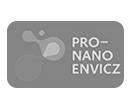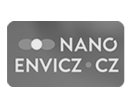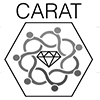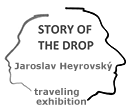Clusters of Department of Theoretical Chemistry
A: Major Equipment - Computational clusters
1) Cluster kohn.jh-inst.cas.cz (336 CPU cores)
- 20 computational nodes + 1 head node
- Each node with 2x CPU Intel Xeon E5-2667 v3
 3.2 GHz (16 cores), 128 GB RAM, 4TB disc space
3.2 GHz (16 cores), 128 GB RAM, 4TB disc space - Connectivity provided by 3 networks: 2x 1Gb/s ethernet (management and data), 1x 40 Gb/s InfiniBand for HPC parallel environment
- 20 kVA power backup solution
- OS Debian GNU/Linux with SoGE queueing system
2) Cluster bose.jh-inst.cas.cz (280 CPU cores)
- 34 computational nodes + 1 head node
- Each node with 2x CPU Intel Xeon X5687
 3.6 GHz (8 cores), 48 GB RAM, 4TB disc space
3.6 GHz (8 cores), 48 GB RAM, 4TB disc space - Connectivity provided by 3 networks: 2x 1Gb/s ethernet (management and data), 1x 40 Gb/s InfiniBand for HPC parallel environment
- 16 kVA power backup solution
- OS Debian GNU/Linux with SGE queueing system
3) Cluster gpu.jh-inst.cas.cz (312 CPU cores)
- 17 computational nodes + 1 head node
- Each node with 2x CPU Intel Xeon, several generations and architectures starting with X5675
 3.07 GHz (12 cores per node) and ending with E5-2687W v4
3.07 GHz (12 cores per node) and ending with E5-2687W v4  3.0 GHz (24 cores per node), 8-10 GB RAM per core, 2-4 TB disc space per node
3.0 GHz (24 cores per node), 8-10 GB RAM per core, 2-4 TB disc space per node - 12 nodes is equipped with GPU computational card Tesla Nvidia
- 1 node equipped with Intel Xeon Phi computational card
- Connectivity provided by two networks: 2x 1Gb/s ethernet (management and data)
- 16 kVA power backup solution
- OS Debian GNU/Linux with SGE queueing system
B: Available Methods
1) Computational clusters are equipped with the following free and commercial software
- Compiler Intel, GNU
- Libraries: Intel MPI, Intel MKL, OpenMPI, OFED, FFTW, Global Arrays
- Quantum chemistry programs: CP2K 2.6, CRYSTAL14, DALTON 2016, GAMESS(US), Gaussian 09, Molpro 2012, Molcas 8.0, Molden 5.4, NWChem 6.6, ORCA 3.0.3, TmoleX 4.1.1, Turbomole 7.1, VASP 5.4, VMD 1.9.2
2) Locally developed or locally extended/modified methods (most of them still under development)
- Discrete Momentum Representation (DMR) method for vibrationally inelastic collisions of electrons with polyatomic molecules - fully developed in the department
- Two-electron R-matrix method for description of large Rydberg molecules - fully developed in the department
- Hilbert-space Multireference CC methods including LPNO versions
- Density matrix renormalization group (DMRG) method for strongly correlated systems
- DMRG-based externally corrected CC methods including LPNO version
- Molecular dynamics with non-adiabatic and spin-orbit couplings implemented in Newton-X

Department of Theoretical Chemistry
Deputy Head
















